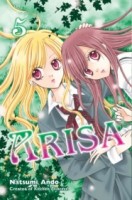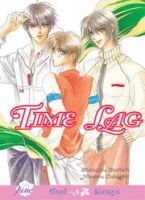Support manga, support your library!
 I recently came to the decision to retire my bimonthly Library Love feature. With the slogan “Support manga, support your library!,” Library Love was a way for me to highlight manga that I was borrowing and reading from my local libraries. It’s time for me to finally say goodbye to Library Love in order to make room at Experiments in Manga for other features and reviews. In the future, I will be including my thoughts on my library manga finds in the “Quick Takes” section of the My Week in Manga feature. As I say my final farewell to Library Love (the feature, not my actual love for libraries which is eternal), I wanted to make one last special Library Love post that focused on actually finding manga in libraries. What I’ll have to say specifically applies to libraries in the United States and Canada since those are what I am most familiar with, but hopefully my comments will apply to library systems in other countries as well.
I recently came to the decision to retire my bimonthly Library Love feature. With the slogan “Support manga, support your library!,” Library Love was a way for me to highlight manga that I was borrowing and reading from my local libraries. It’s time for me to finally say goodbye to Library Love in order to make room at Experiments in Manga for other features and reviews. In the future, I will be including my thoughts on my library manga finds in the “Quick Takes” section of the My Week in Manga feature. As I say my final farewell to Library Love (the feature, not my actual love for libraries which is eternal), I wanted to make one last special Library Love post that focused on actually finding manga in libraries. What I’ll have to say specifically applies to libraries in the United States and Canada since those are what I am most familiar with, but hopefully my comments will apply to library systems in other countries as well.
I adore libraries and I have since I was very young. I don’t think anyone was really very surprised when I fell into librarianship as a career. There are many, many reasons that I’m thankful for libraries which I won’t get into here, but I would like to say this: If it wasn’t for libraries, I would not have become the manga fanatic that I am now. When I first started reading manga, it was all borrowed from libraries. For one thing, collecting manga requires both money and space. Making use of libraries that are already doing some of that collecting is a good thing. It benefits you and it benefits libraries, too. Manga and comics tend to circulate well, and good circulations statistics help libraries in a variety of ways. Plus, by supporting manga at your library, you are also supporting the creators and publishers of that manga.
Manga can be found in all types of libraries: public, academic, school, special. Archives and museums get in on the manga action, too. It’s somewhat difficult to make generalizations regarding how to find manga in libraries because each library is different and serves a different population. Broadly speaking, libraries are organized in the way that best serves its patrons, which means that the same manga found in one library may be shelved in another area entirely at a different library. Some libraries will shelve manga and other comics by subject, mixed in with the rest of the collection. Other libraries will have an entire section devoted specifically to manga and graphic novels. In some cases, a library may divide materials by age group. There any number of ways to organize a collection, and each library is different. Familiarize yourself with your library’s system and be aware that you may need to look in multiple places to find all of the manga.
One of the benefits of a library is that it is a physical location that you can visit. After you figure out where the manga is shelved, take time to browse! It’s a quick and easy way of determining what sorts of manga your library collects and sampling what it has. There’s also this wonderful phenomena called serendipity—you might discover manga that you didn’t even know you wanted to read. But don’t limit yourself to what you can see on the shelf, because the library will always have more manga available. Be sure to make use of the library’s catalog, too. Most libraries have an online catalog that supports searches by title, creator, subject, ISBN, general keyword, and more. Some libraries are even beginning to explore digital options for manga and comics, too.
Finding manga through a library doesn’t stop there, either. Many libraries participate in interlibrary loan programs which allow one library to borrow materials that another library owns. This is a fantastic way to track down copies of hard-to-find or out-of-print manga to read. Many libraries also accept and pursue purchase suggestions from their patrons. If there’s a manga you’d like to read or that you think would be a good fit for your library, let someone know! Generally, libraries want to provide access to the materials that people want or are excited about; they want to spend money on materials that will actually be used. Which brings me to my final point about manga in libraries: Don’t be afraid to talk with the librarians and other library workers! Make suggestions, ask questions, and give feedback. We really are here to help.
Quick Tips for Finding Manga in Libraries
1) Manga might be kept in multiple areas, you may need to look around
2) Browse the shelves, but search the catalog, too
3) Check to see if your library participates in an interlibrary loan program
4) Many libraries accept purchase suggestions. Don’t see what you want? Ask for it!
5) Don’t be afraid of the librarians and other library workers (We’re here to help!)
















